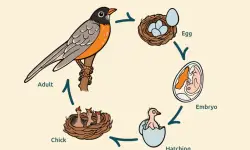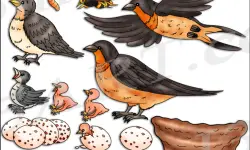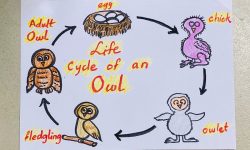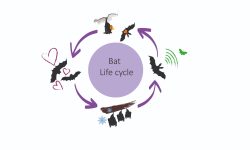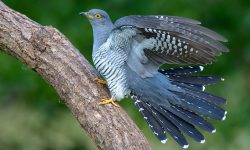If you love birdwatching as much as I do, then Florida is an incredible place to explore—especially when it comes to woodpeckers. With its mix of pine forests, swamps, and suburban green spaces, the Sunshine State is home to an impressive variety of woodpeckers, each with its own unique call, behavior, and appearance. Over the years, I’ve had the joy of spotting many of these species firsthand, from the flashy Red-headed Woodpecker to the secretive Red-cockaded Woodpecker deep in protected pine habitats.
Florida Woodpeckers are more than just beautiful—they’re essential to the health of local ecosystems. These birds help control insect populations, create nesting cavities for other species, and even serve as indicators of forest quality. Just spending time outdoors in the right spots, you’re bound to hear the rhythmic drumming or sharp calls of these fascinating birds.
In this guide, I’ll walk you through 10 common Florida Woodpeckers that you’re likely to encounter, complete with pictures and tips to help you identify them. If you’re a beginner or a seasoned birder, these are the species you’ll definitely want to know. Let’s dive into the incredible world of Florida Woodpeckers.
Commonly Found Woodpeckers in Florida
Red-bellied Woodpecker (Melanerpes carolinus)
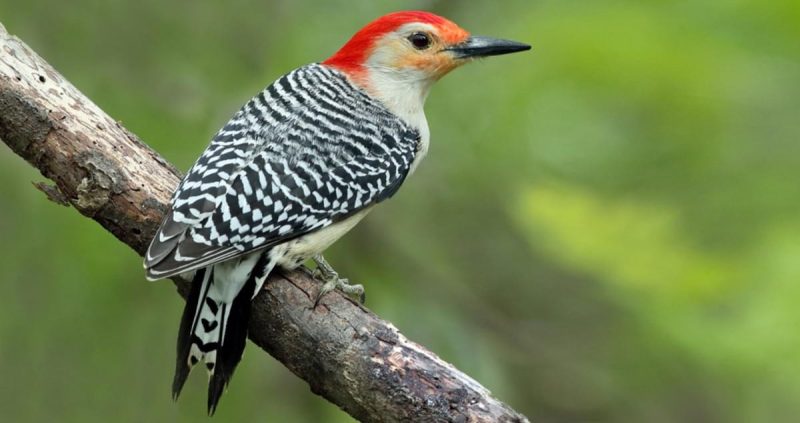
The Red-bellied Woodpecker is a medium-sized woodpecker with a striking appearance that makes it easy to spot in Florida’s forests, parks, and suburban areas. Despite its name, the reddish tint on its belly is often faint and hard to notice. The most prominent features are the bold black-and-white barred back and the bright red cap, which extends from the bill to the nape in males, and only to the crown in females.
This species is commonly mistaken for others due to its misleading name, but careful observers can distinguish it by its loud, rolling calls and its habit of clinging vertically to tree trunks. The bird uses its strong bill to excavate wood, forage, or store food. It frequently visits feeders, especially for suet, sunflower seeds, and fruits, making it a familiar visitor in Florida backyards.
Red-bellied Woodpeckers prefer mixed woodlands, swamps, and urban tree lines. They are known for caching food in bark crevices and even fence posts. Their diet includes insects, spiders, nuts, acorns, and berries. In warmer Florida climates, they may breed earlier in the year, and both sexes help with nest excavation and chick rearing.
Downy Woodpecker (Dryobates pubescens)
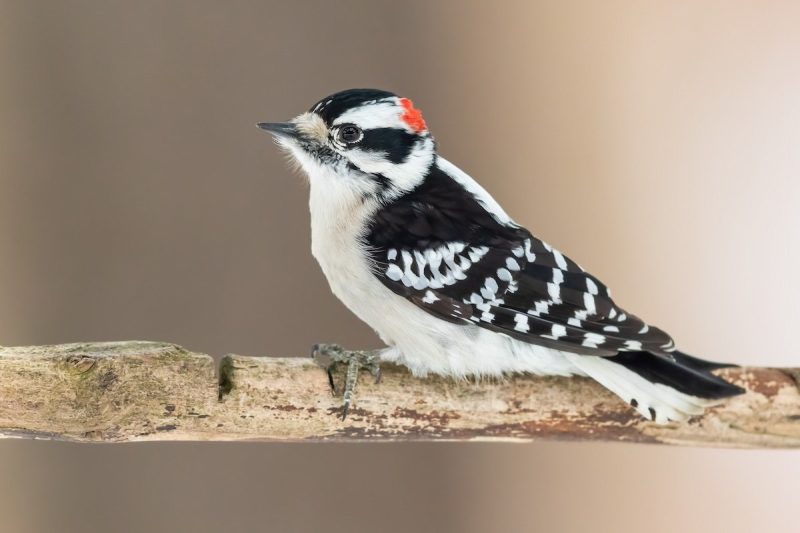
The Downy Woodpecker is the smallest woodpecker in North America, with a compact body and a short, chisel-like bill. Males display a small red patch on the back of the head, while females lack this feature. Both sexes have a black-and-white checkered back and white underparts, giving them a crisp, clean look that blends well in forested environments.
Although they closely resemble the larger Hairy Woodpecker, Downy Woodpeckers can be identified by their proportionally smaller bill and more delicate build. Their soft “pik” calls and descending whinny-like trills are also key identifiers. These birds are common visitors to feeders, especially those offering suet, peanuts, or sunflower seeds.
Downy Woodpeckers inhabit deciduous forests, orchards, gardens, and even city parks across Florida. They are agile foragers, often seen climbing along tree trunks and branches as they probe for insects and larvae. They also consume seeds, berries, and sap, occasionally taking advantage of holes drilled by sapsuckers.
Hairy Woodpecker (Dryobates villosus)
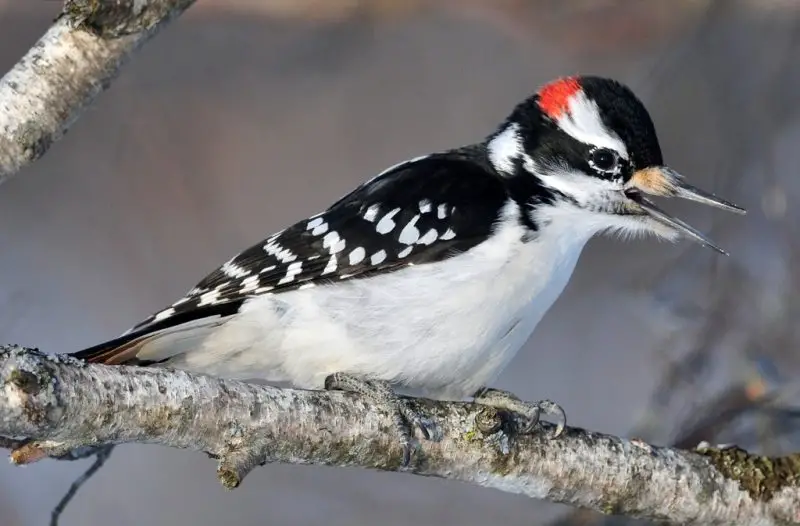
The Hairy Woodpecker is a larger and sturdier version of the Downy Woodpecker, with a longer, dagger-like bill that nearly matches the length of its head. It shares the same black-and-white plumage and general shape, but is more robust in appearance. Males have a red patch on the back of the head, while females do not.
This species can be more elusive than the Downy, as it favors mature forests with large trees and less human activity. However, it may still appear in suburban woodlots and parks. Its sharper, louder “peek” calls and strong drumming patterns distinguish it audibly from its smaller cousin. When foraging, the Hairy Woodpecker uses its powerful bill to excavate deep into wood, often leaving larger holes behind.
Hairy Woodpeckers feed mainly on insects such as beetle larvae, ants, and caterpillars hidden under bark. They also eat nuts, seeds, and berries when available. These birds typically nest in tree cavities, and both parents take turns incubating eggs and feeding their young. In Florida, they are present year-round and are particularly reliant on older pine forests and undisturbed woodland areas.
Pileated Woodpecker (Dryocopus pileatus)
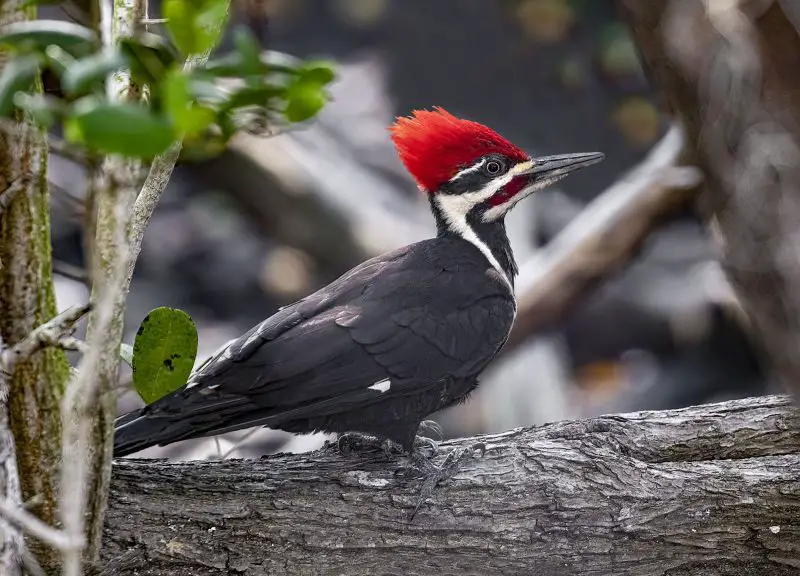
The Pileated Woodpecker is the largest woodpecker in Florida and one of the most impressive birds found in the state’s woodlands. It has a bold black body with white stripes running down the face and neck, and a vivid red crest that gives it a somewhat prehistoric appearance. In flight, its large wings show prominent white underwing patches.
These woodpeckers are known for their powerful drumming, which can echo loudly through the forest as they chisel rectangular holes in trees while searching for insects. Their calls are loud and almost laugh-like, making them easier to detect in dense woodland areas. They are often spotted flying in a slow, undulating pattern between tall trees.
Pileated Woodpeckers prefer large tracts of mature forest, swamps, and wooded suburbs where dead trees or snags are available. Their primary diet consists of carpenter ants, beetle larvae, and other insects, though they also eat fruits and nuts, especially in winter. They excavate large nest cavities, and these abandoned holes later provide homes for many other forest species.
Northern Flicker (Colaptes auratus)
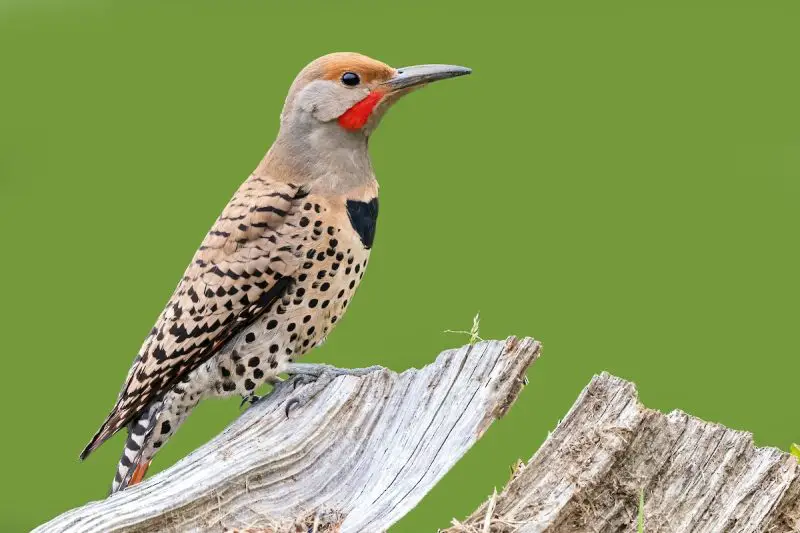
The Northern Flicker is a distinctive, ground-foraging woodpecker found across Florida, particularly in open woods, forest edges, and suburban areas. The eastern “yellow-shafted” form, common in the state, has a tan face, gray crown, and a bright red nape. The underwings and tail feathers flash vibrant yellow in flight, adding to their unique appeal.
Unlike most woodpeckers, Northern Flickers often feed on the ground, especially where ants are abundant. They have a spotted belly, black bib, and crescent-shaped chest mark, which help distinguish them from other species. Their call is a clear “wick-a-wick-a-wick,” and they are also known for long bouts of drumming during the breeding season.
These woodpeckers favor semi-open habitats, such as pine flatwoods, old fields with scattered trees, and even suburban lawns. Their diet is dominated by ants and beetles, but they also consume fruits and seeds. In Florida, they may be resident or migratory, with northern birds joining the local population during the winter months.
Red-headed Woodpecker (Melanerpes erythrocephalus)
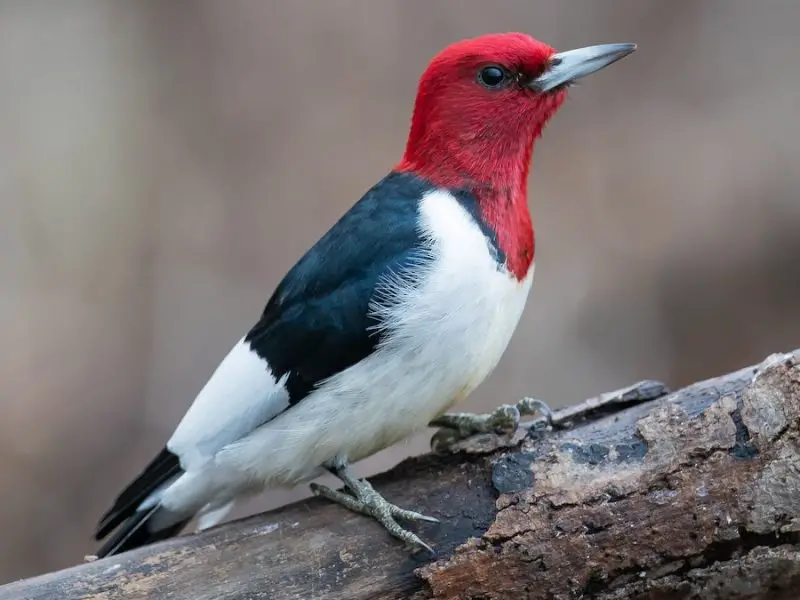
The Red-headed Woodpecker is one of Florida’s most visually striking woodpeckers, easily identified by its entirely red head, snowy white belly, and jet-black back with white wing patches. Unlike many other woodpeckers, both the male and female have identical plumage, making them equally vivid and easy to recognize.
This species is less common than others and prefers open habitats such as oak savannas, pine woodlands, and old orchards. It often perches openly on tree trunks or snags and catches flying insects midair. Its calls are sharp and raspy, and it drums in short bursts. Red-headed Woodpeckers are also known for their habit of storing acorns and other food in tree bark.
Their diet is highly varied and includes insects, nuts, fruits, and seeds. They will even eat small rodents and nestlings on occasion. In Florida, they are more frequently seen in the Panhandle and north-central parts of the state, especially in habitats with sparse understory and abundant dead trees for nesting.
Yellow-bellied Sapsucker (Sphyrapicus varius)
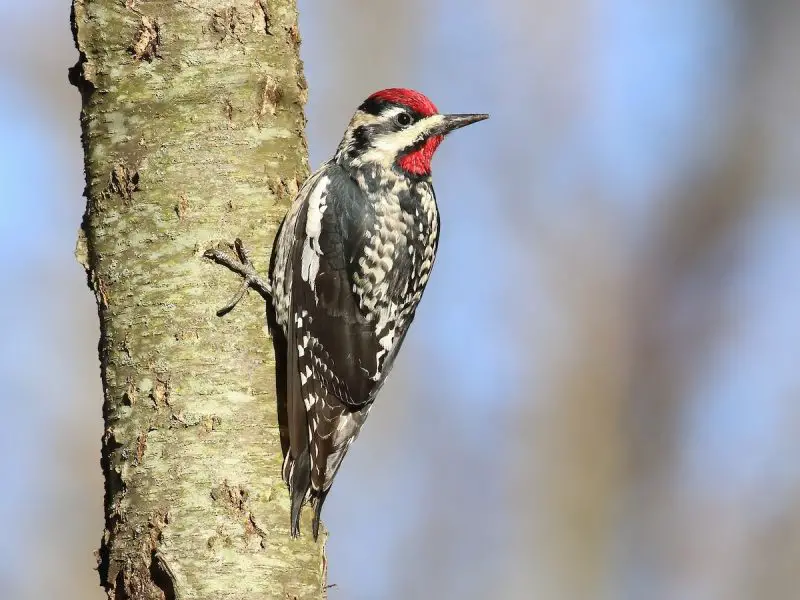
The Yellow-bellied Sapsucker is a winter visitor to Florida, migrating south from its breeding grounds in northern forests. It is a medium-sized woodpecker with a mottled black-and-white back, pale yellow belly, and a distinct red forehead. Males also have a red throat, while females display a white one. A white vertical wing stripe is often visible when perched.
This species is unique among Florida woodpeckers for its sap-feeding habits. It drills neat rows of small holes into tree bark to access sap, which it licks up with its brush-tipped tongue. These sap wells also attract insects, which the bird opportunistically eats. Its mewing call and irregular, soft drumming help identify it in the field.
In Florida, Yellow-bellied Sapsuckers are found in a wide range of wooded habitats during the cooler months, from swamps and forests to parks and backyards. While not a permanent resident, they can be seen from late fall through early spring. They often return to the same sap trees year after year, particularly favoring maples, hickories, and fruit trees.
Rare or Extirpated Woodpeckers in Florida
Red-cockaded Woodpecker (Dryobates borealis)
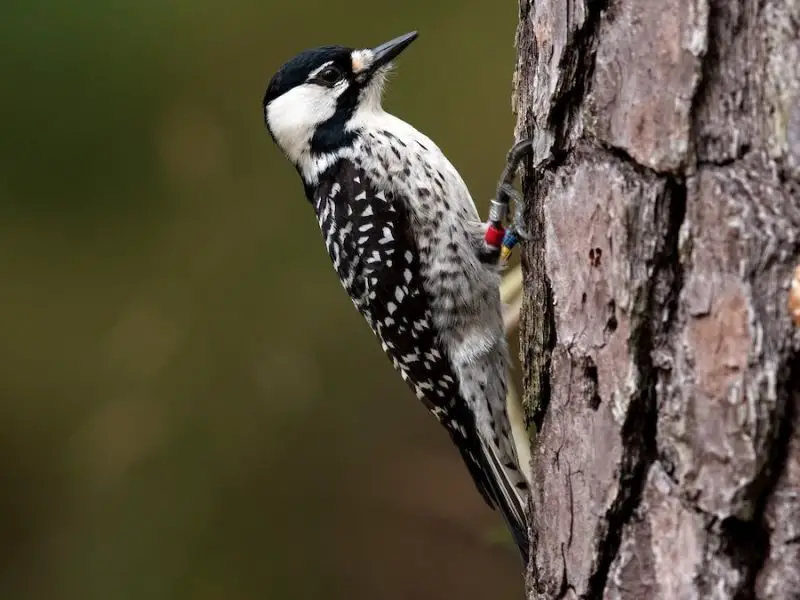
The Red-cockaded Woodpecker is a small, black-and-white woodpecker with subtle markings and a highly specialized lifestyle. It has a distinctive black cap and white cheek patches, with males showing a nearly invisible red streak—or “cockade”—on the side of the head, which gives the species its name. Despite its modest appearance, this bird is ecologically unique and federally listed as endangered.
Unlike most woodpeckers, it nests exclusively in living pine trees, particularly longleaf pines aged 80 years or older. It creates cavities over several years, aided by its social structure, where family groups help maintain nesting sites. These birds also peck small holes around the cavity entrance to exude sap, which deters climbing predators like snakes. Their calls are high-pitched and nasal, often described as a sharp “sklit” or “churt.”
Red-cockaded Woodpeckers are now confined to protected habitats such as Apalachicola National Forest and Ocala National Forest. They depend on open, fire-managed pine ecosystems, which historically covered much of the southeastern U.S. Their diet consists mainly of ants, beetles, larvae, and other insects found under bark. Conservation efforts focus on prescribed burns and artificial cavity installation to support remaining populations.
Ivory-billed Woodpecker (Campephilus principalis)
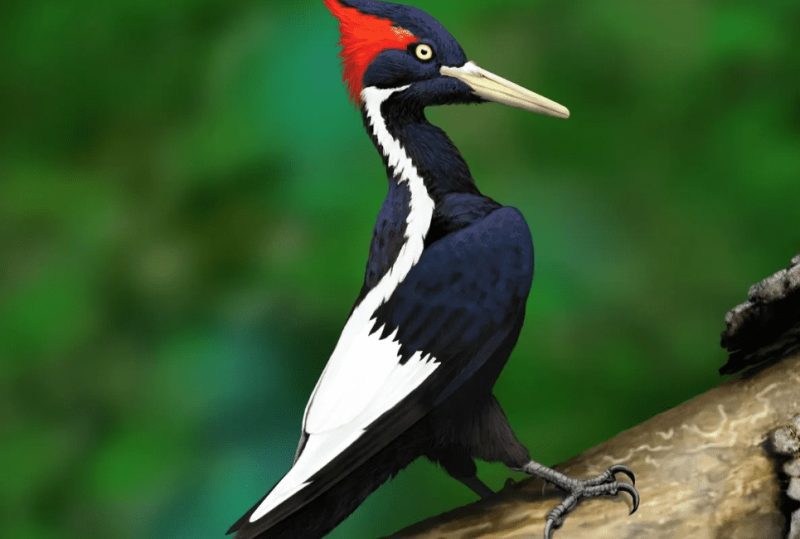
The Ivory-billed Woodpecker is one of the most iconic and mysterious birds in North America, known for its dramatic size and ghost-like presence in conservation lore. It measured nearly 20 inches long with striking black-and-white plumage, a white trailing edge to the wings, and a large ivory-colored bill. Males had a brilliant red crest, while females displayed a black one.
This species was historically found in bottomland hardwood forests and cypress swamps, particularly in the Florida Panhandle and other parts of the southeastern U.S. It relied heavily on large tracts of undisturbed old-growth forest, where it foraged by stripping bark to access beetle larvae. Its double-rap drumming and trumpet-like calls once echoed through swampy woodlands, but no confirmed recordings exist in recent decades.
The last widely accepted sightings of the Ivory-billed Woodpecker in Florida occurred decades ago, and despite scattered reports and extensive searches, it is now considered possibly extinct. Nevertheless, it remains officially listed as critically endangered due to a lack of definitive evidence of extinction. Its story symbolizes the importance of preserving wild habitats before species vanish forever.

